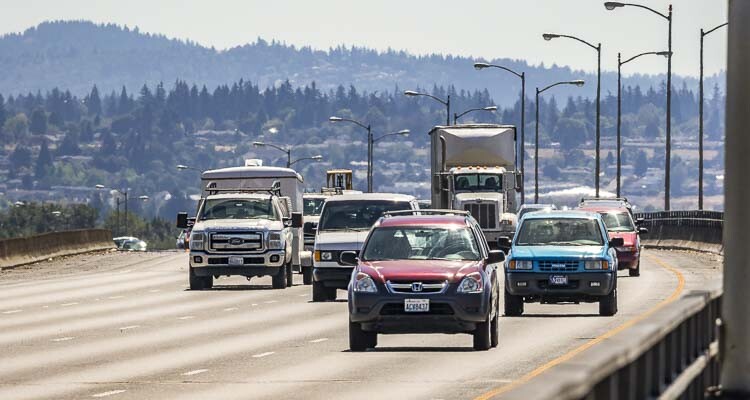
Charles Prestrud believes that now that we have hard data that sheds light on commuting, the public agencies responsible for our transportation system need to update their plans and revise their forecasts
Charles Prestrud
Washington Policy Center
There has been much speculation about how travel behavior has changed in the wake of the COVID pandemic. The answer to that important question is now coming into view. Data from the American Community Survey allows us to compare pre and post COVID commuting trends. The table below shows the commute mode shares in Washington State for 2019, 2021, and 2022.

Prior to the pandemic commuting by single occupant vehicle (SOV) was far and away the most common mode, constituting 71% of commute trips. During the pandemic lockdowns and business closures of 2021 it dipped to 62%, and only rebounded slightly to 63.2% in 2022. Transit, which accounted for just 7.12% of commute trips in 2019, fell to only 2.13% in 2021, and rebounded only slightly to 3.16% in 2022. Walking and biking also decreased during the pandemic and have not shown a rebound in 2022, remaining in the low single digits.
The only mode to show an increase was teleworking (also known as working from home). Working from home had already been increasing prior to COVID but during the pandemic it more than tripled to over 24% of all commute trips. In 2022 working from home subsided a bit as employers called their employees back to work, but it still accounts for over 20% of commute trips, which is more than transit, carpooling, walking and biking combined. This is a remarkable shift in commuting behavior, and it is an indication of what we can expect in the years ahead. Once people have set up home offices and employers have adopted policies that allow or encourage teleworking it will be easier for people to continue working from home, at least a few days per week.
The significance of this shift in commuting becomes apparent when contrasted with the transportation plans of public agencies, including WSDOT, Regional Planning agencies, cities, and transit agencies. Those plans almost all emphasize transit, biking and walking, and they assume those modes will accommodate much of the increased travel demand that will come with the growth in the State’s population. For example, the PSRC’s 2050 Plan assumed transit ridership would more than double by 2030, but between 2019 and 2022 ridership fell by more than 30%. The large ridership increase assumed by PSRC now looks highly improbable.
The situation with WSDOT is similar. For more than twenty years WSDOT plans have emphasized transit, biking and walking. Those are all good things to encourage and to plan for, but the data shows those modes all decreased significantly during the pandemic, and they weren’t growing much even before the pandemic.
What’s missing is the WSDOT plan to accommodate the increase in vehicular travel. The State Highway System Plan hasn’t been updated since 2007. Nearly all the projects in that plan have since been completed or are well along toward construction. Much as we might wish that transit, biking and walking would reduce the need for highway improvements, the data gives us no reason to believe that will occur.
Now that we have hard data that sheds light on commuting, the public agencies responsible for our transportation system need to update their plans and revise their forecasts. The pre-COVID baselines used in prior plans need to be replaced with more recent trend data. This may prompt some uncomfortable policy discussions, nobody likes to abandon an attractive vision, but wishful thinking isn’t an effective strategy. Updated plans should face up to the change in travel behavior and take advantage of the opportunities that have been created by technology and the increase in working from home.
Charles Prestrud is the director of the Coles Center for Transportation at the Washington Policy Center.
Also read:
- Busy pavement season ahead on Vancouver streetsThe city of Vancouver is set to repave and preserve 76 lane miles across 20 neighborhoods in summer 2025, with ADA upgrades and community notices throughout.
- State representative: Expect sticker shock when Interstate Bridge project officials reveal price, tolling plansAt a town hall in Battle Ground, Rep. John Ley warned of major cost increases and tolling burdens tied to the Interstate Bridge replacement project.
- Opinion: Washington state lawmakers increase the cost of driving – againBob Pishue of Mountain States Policy Center argues that new vehicle and fuel taxes in Washington will raise driving costs while diverting funds away from roads.
- Overnight full closure of I-5 near Woodland for bridge inspection, May 6WSDOT will fully close southbound I-5 near Woodland overnight on Tuesday, May 6 for a bridge inspection using a chain drag test.
- Opinion: Do we still need TriMet?John A. Charles Jr. of the Cascade Policy Institute argues that TriMet should halt expansion plans and prepare for major service reductions in response to falling ridership and rising costs.









